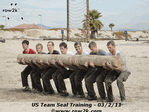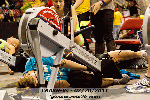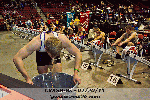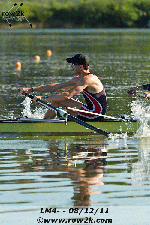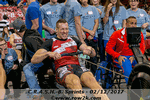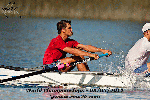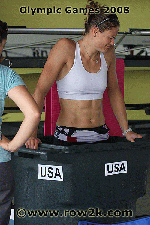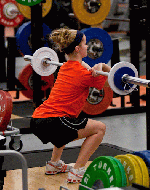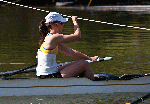An erg is an erg!
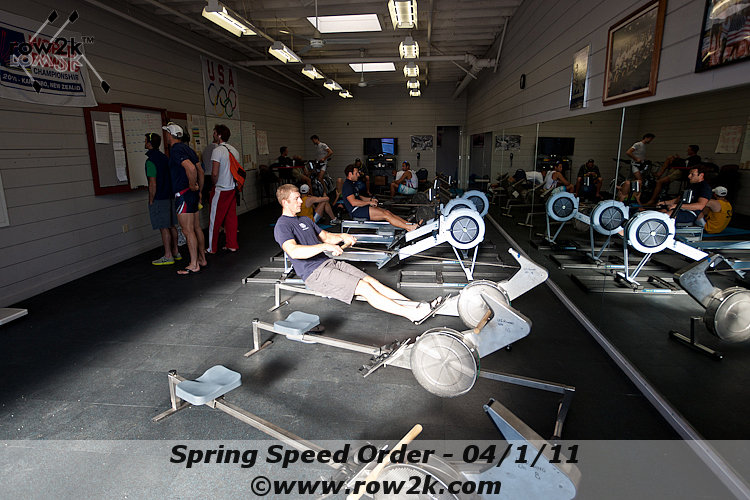
Coaches and clients often ask me my thoughts on different types of ergometers (ergs). With the recent release of Concept 2’s Dynamic Indoor Rower, there’s been an increased “buzz” on dynamic ergs, which are similar to the Rowperfect, which has been around for years. As ergs evolve, changes in their designs have helped reduce stresses on the body, specifically the passive tissues -- bones, discs and ligaments. Determining which erg is right for you is a issue of personal preference, as well as your ability to tolerate change-of-direction forces.
When comparing a standard erg to a dynamic erg or to a slider, ultimately, the net training effect is going to be small. For some athletes, however, it may mean the difference between being able to train on the erg or not. The standard erg offers no change-of-direction momentum to the athlete. Therefore, athletes are 100% responsible for absorbing the stresses applied to the body as they go from the finish of the stroke to the recovery. This contrasts with both dynamic ergs and sliders -- both of which offer the key benefit of change-of-direction momentum. To the rower, this means less energy is required to execute each stroke, and less stress potential stress to passive tissues including low back discs, ribs and ligaments. The energy-saving effect of the change-of-direction momentum is evident when one compares test scores taken on standard Concept 2 ergs against the same tests taken on sliders. Test scores on the sliders will be faster by several seconds (3 to 5 seconds faster for elite rowers on a 2K test).
A percentage of athletes who can not tolerate rowing on a standard erg (because it creates back pain), can however row on the water pain-free. For these same rowers, boat size also makes a difference -- the larger the boat, the less stress on the body at the finish and start of the recovery. Injuries for all sports primarily stem from the stresses placed on the body as it quickly changes direction. Rowing is no different. There are two places in the rowing stroke where this happens: the catch and the finish. The ability to tolerate these changes in direction is key to preventing training-related injuries. Both flexibility and strength deficits potentially reduce an athlete’s ability to tolerate these change-of-direction stresses, and could lead to injuries.
On the other hand, if athletes have excellent strength and flexibility in the muscles that control these change-of-direction forces, they can tolerate training on any type of rowing erg. For athletes previously unable to row on standard ergs, dynamic ergs are ideal for getting them back to erg rowing. However, there will still be a percentage of rowers who will not be able to tolerate the stresses of rowing on either the standard or dynamic ergs because their strength and flexibility deficits are still limiting factors. Low and mid-back pain and rib fractures are two clear signs that erg-limiting strength and flexibility issues exist. For these athletes, identifying and correcting their individual strength and flexibility deficits offers the best solution. As athletes improve their strength and flexibility, they will restore their ability to tolerate change-of-direction forces, and return to pain-free erging on any type of erg.
Bottom-line, the erg you choose reflects your personal needs and preference. If you can’t tolerate the change-of-direction forces on a standard erg, you may find temporary relief on a dynamic erg or slider. However, beware: I compare this solution to people who have very high levels of cholesterol and take statin medications, but who continue to eat poorly. In the long run, athletes who can’t tolerate standard ergs should be evaluated for body balance issues (strength and flexibility deficits) and start a corrective program. Like any effective program, a body-balanced based solution requires commitment and consistency, but offers a more reliable, long term solution to enjoying pain-free rowing on any erg and on the water.
If you enjoy and rely on row2k, we need your help to be able to keep doing all this. Though row2k sometimes looks like a big, outside-funded operation, it mainly runs on enthusiasm and grit. Help us keep it coming, thank you! Learn more.
Comments | Log in to comment |
There are no Comments yet
| |
- Bont Rowing
- Calm Waters Rowing
- Concept 2
- Craftsbury Sculling
- The Crew Classic
- CrewLAB
- Croker
- Dad Vail Regatta
- Durham Boat Co.
- Empacher
- Faster Masters
- Filippi
- Fluidesign
- h2row.net
- HUDSON
- Live2Row Studios
- Nielsen-Kellerman
- Oak Ridge RA
- Peinert Boat Works
- Pocock Racing Shells
- Race1 USA
- Rockland Rowing Masters Regatta
- RowKraft
- Rubini Jewelers
- Vespoli USA
- WinTech Racing
- Bont Rowing
- Calm Waters Rowing
- Concept 2
- Craftsbury Sculling
- The Crew Classic
- CrewLAB
- Croker
- Dad Vail Regatta
- Durham Boat Co.
- Empacher
- Faster Masters
- Filippi
- Fluidesign
- h2row.net
- HUDSON
- Live2Row Studios
- Nielsen-Kellerman
- Oak Ridge RA
- Peinert Boat Works
- Pocock Racing Shells
- Race1 USA
- Rockland Rowing Masters Regatta
- RowKraft
- Rubini Jewelers
- Vespoli USA
- WinTech Racing




